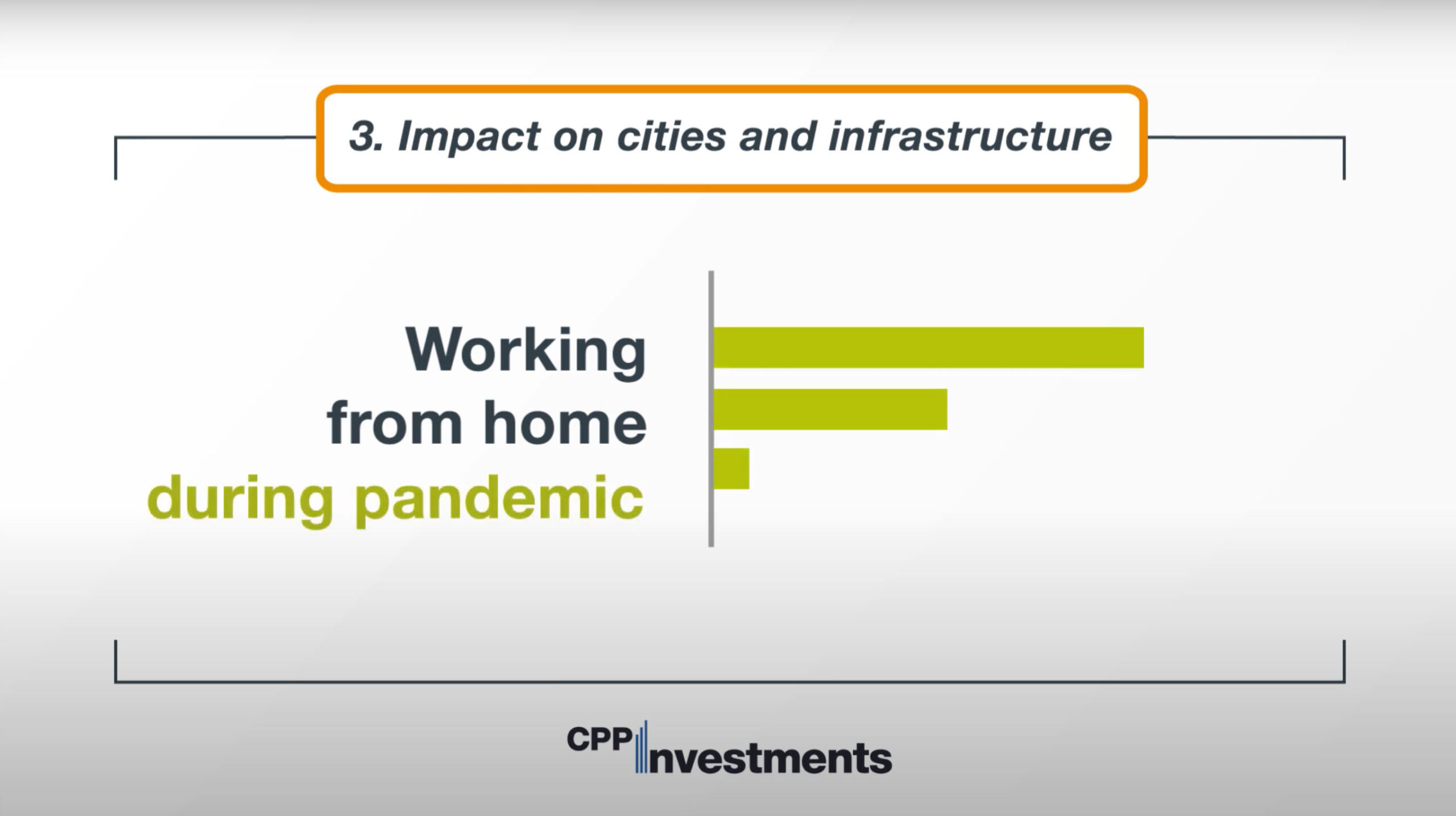The world will be different after COVID-19. For long-term investors, this will mean both new risks and new opportunities as we transition to recovery.
The great events of history have a way of molding people and societies. The generation raised during the Great Depression was left with a deeply engrained sense of thrift. For the WWII generation, it was an attitude of stoicism and belief in hard work. Younger cohorts impacted by the 2008 recession spend less, even many years later, and are more likely to use coupons and purchase sale items. Crises can also change national priorities, driving new alliances and reshaping the geopolitical landscape.
For long-term investors, it is critical to understand these generational shifts. They signal where demand is likely to reside in the future, where the new sources of innovation and disruption will come from and how changing policies and regulations will reshape economies, all of which can have direct impact on a global portfolio.
That’s why we at CPP Investments set out to identify, systematically, the new habits and beliefs that are likely to shape the post–COVID-19 era. To ensure we were covering the full breadth of change, we divided our efforts into four areas that had the potential to impact investments: permanent changes to consumer behaviour; long-term impact on health care and privacy policy; impacts on cities and infrastructure; and new imperatives for global supply chains. For each area, we sifted through quantitative and qualitative data, including existing research from respected organizations and our own surveys and proprietary research. In addition, we drew on the expertise of more than 40 professionals across our fund and conducted scores of interviews with outside experts and specialists, including relevant CPP Investments portfolio companies and investment partners.
We found a range of COVID-19 related effects, some driven by radical changes in behaviours enforced during the lockdown, others by health and economic concerns, and political uncertainty.
We expect some of these effects to be long-lasting, while others will be more transient. Our focus is on identifying the changes that will be both enduring and progressive. A selection of key findings from our research follows.
Four areas likely to impact investment in the post-pandemic era

Consumer Behaviour

Health Care and Privacy Policy

Cities and Infrastructure

Supply Chains
Consumer behaviour
Confined to their homes for months and subjected to a rapid reordering of their perceived health risks and economic prospects, consumers are emerging from a shared trauma that will change their priorities and concerns for years to come.
- The increased use of e-commerce during the months of lockdown has been widely reported. Digging a little deeper, though, yields some important insights. For example, online grocery usage surged, with 31% of U.S. households using such services in March 2020—up from 13% in August 2019—but this may not signal a permanent change. Many consumers gave the services poor marks for convenience and quality. Equally challenging in a low-margin business, many U.S. grocers are losing money on their online orders and will need to invest in infrastructure to improve economics.

- The gains weren’t spread evenly. The U.S. and Europe appear to be rapidly catching up to China in e-commerce, but not all merchants are reaping the benefits. Big omnichannel players like Amazon and Walmart had enormous advantages over smaller retailers with more limited selections and unscalable infrastructure. The biggest factors in consumer uptake—free and reliable delivery—also favour the bigger services.
- Demographics matter. Older consumers, anxious to avoid crowded public spaces for health reasons, now say they plan to increase e-commerce adoption across all categories; while younger consumers, restless after months of lockdown, indicated a building desire to return to stores for more discretionary categories.
- How offline stores will fare depends on where you look. When younger consumers in the U.S. and Europe return to the mall, they are apt to find a smaller selection of stores, as a wave of retailers in the U.S. and Europe file for bankruptcy or break their leases. In China, however, the online-to offline shift continues, with malls still growing and consumers returning in force.
- Online entertainment across categories like music and video streaming, paid and unpaid, short-form and long-form, appears poised to retain new users with the cost and convenience of offline entertainment viewed negatively.
Health care and privacy policy
Consumers in many regions are reluctant simply to hand over personal data, and will only do so under certain conditions. The COVID-19 crisis highlighted the importance of understanding consumer attitudes toward privacy.
- For Western governments, long-standing consumer concerns over privacy present a challenge. China and South Korea, which both managed to flatten the curve of new COVID-19 infections, did so in part by massive contact tracing, which involved the collection of personal health data. Consumers in the West are more reluctant to share that data. For example according to our research, nearly half of U.S. and German consumers said they had concerns about sharing personal data with the government and companies, compared to less than 20% of Chinese and Indian consumers.
- Consumers may be right to be concerned; past policy changes where governments collected new data tended to be made permanent, and even privacy-focused regulations such as the General Data Protection Regulation (GDPR) in Europe can have adverse consequences, like creating new barriers to entry.
- Telehealth is another notable pandemic-driven trend. While used by only 20% of the population in the countries we looked at, of people who did use it, a third tried it for the first time during the COVID-19 crisis. Longer-term uptake will depend on the reason for the visit and whether providers are able to improve the experience. In the U.S. and U.K., satisfaction levels deteriorated from pre-COVID-19 levels, possibly because usage was being expanded beyond routine areas (or to less well-suited patients). In contrast, respondents in India and China continued to give the experience high marks.

Cities and infrastructure
Cities are a reflection of the people who live in them. From mass transit to public gatherings, few areas of urban life will be left unmarked by COVID-19.
- Remote work, a slow-building trend before COVID-19, accelerated dramatically during the crisis, with roughly 50% of workers in China, the U.K. and the U.S. working from home, up from 5% or fewer. During the last week of March 2020, up to four-in-ten Canadians were teleworking. Employers and employees both found the arrangement more satisfactory than many would have anticipated. A number of notable large enterprises, including Facebook, Bank of Montreal, Tata Consultancy Services and Optus have announced long-term plans to increase work-from home arrangements.
- As a result, we expect a long-term uptick in remote work, though more in the form of flexible schedules that allow for a few days per week at home, rather than a wholesale abandonment of the office. Companies enabling remote work (e.g., collaboration and productivity tools, cybersecurity, cloud), automation, and sectors that focus on office sanitation (HVAC, building management, cleaning) are likely to see tailwinds from the crisis.
- The work-from-home trend will have significant knock-on effects. As companies consider holding their current office footprints steady or even shrinking them, for example, there may be a shift of population away from the largest urban centers. With greater geographic flexibility in employment, employees looking for more space and fewer crowds will migrate farther from the city center. This is likely to accelerate the ongoing growth of Tier 2 cities in the U.S. and Europe.
- The health crisis is also altering mobility trends, with shared options such as public transit and ride hailing taking a hit, at least in the near term, as consumers turn instead to walking, biking and driving their own cars.
Supply chains
There’s a new word in supply-chain circles, and it’s not “global.” Amid rising labour costs and heightened geopolitical risk, companies today are focused on resilience. The COVID-19 crisis, which exposed sourcing weaknesses in many sectors, is driving companies to re-evaluate where and how they build and source products.
- Companies that benefited over the past several decades from the rise of Chinese manufacturing have been reassessing that strategy with increased urgency, although cost remains a key consideration.
- We expect global supply chains will grow more complex, not less, as COVID-19 and geopolitical tensions lead companies to build in greater diversification by turning to other countries or multi-sourcing. India, Southeast Asia and regional players, like Mexico and Poland, are best positioned to benefit from gradual, incremental supply chain diversification.
- This complexity benefits providers of supply chain software (which provides visibility) and automation (which can offset higher labour costs and improve efficiency).
- The scramble during the pandemic to procure essential health-care supplies, from ventilators to protective equipment, will lead to a trifurcation in the global healthcare supply chain, with the U.S., Europe and China likely to push for supply chain independence, even at the cost of restricting foreign direct investment.
As COVID-19 leaves its mark on consumers, businesses and governments, we will continue to monitor and assess the changing landscape as part of our ongoing risk management efforts. Managing risk while recognizing true opportunity is an essential task for the long-term investor. It is what enables us to fund the enterprises that will lead the world to a safer, more sustainable future.
Managing risk while recognizing true opportunity is an essential task for the long-term investor.
Facts and figures are proprietary to CPP Investments unless otherwise stated.
This work reflects the input of investment and core services professionals across CPP Investments, as part of an initiative led by the Thematic Investing team.
About the Authors
Caitlin is responsible for building thematic portfolios exposed to long-term secular growth, and recently established our San Francisco office for Thematic Investing. She manages the Automobility and Climate Change Opportunities strategies within Thematic Investing. Caitlin was a founding member of the Thematic Investing team in Toronto, leading proprietary research into themes and investing in companies expected to benefit.
Ruby Grewal
Directrice générale, Placements thématiques
Ruby is responsible for the Retail 4.0 strategy within Thematic Investing and has extensive experience in fundamental research.
Prior to joining CPP Investments in 2015, Ruby worked as Vice President, Research, for Hansberger Global Investors (a subsidiary of Natixis Global Asset Management) covering several global sectors, including Telecom, Media, Consumer Discretionary & Staples, and Real Estate.
The world will be different after COVID-19. For long-term investors, this will mean both new risks and new opportunities as we transition to recovery. The great events of history have a way of molding people and societies. The generation raised during the Great Depression was left with a deeply engrained sense of thrift. For the WWII generation, it was an attitude of stoicism and belief in hard work. Younger cohorts impacted by the 2008 recession spend less, even many years later, and are more likely to use coupons and purchase sale items. Crises can also change national priorities, driving new alliances and reshaping the geopolitical landscape. For long-term investors, it is critical to understand these generational shifts. They signal where demand is likely to reside in the future, where the new sources of innovation and disruption will come from and how changing policies and regulations will reshape economies, all of which can have direct impact on a global portfolio. That’s why we at CPP Investments set out to identify, systematically, the new habits and beliefs that are likely to shape the post–COVID-19 era. To ensure we were covering the full breadth of change, we divided our efforts into four areas that had the potential to impact investments: permanent changes to consumer behaviour; long-term impact on health care and privacy policy; impacts on cities and infrastructure; and new imperatives for global supply chains. For each area, we sifted through quantitative and qualitative data, including existing research from respected organizations and our own surveys and proprietary research. In addition, we drew on the expertise of more than 40 professionals across our fund and conducted scores of interviews with outside experts and specialists, including relevant CPP Investments portfolio companies and investment partners. We found a range of COVID-19 related effects, some driven by radical changes in behaviours enforced during the lockdown, others by health and economic concerns, and political uncertainty. We expect some of these effects to be long-lasting, while others will be more transient. Our focus is on identifying the changes that will be both enduring and progressive. A selection of key findings from our research follows. Four areas likely to impact investment in the post-pandemic era Consumer Behaviour Health Care and Privacy Policy Cities and Infrastructure Supply Chains Consumer behaviour Confined to their homes for months and subjected to a rapid reordering of their perceived health risks and economic prospects, consumers are emerging from a shared trauma that will change their priorities and concerns for years to come. The increased use of e-commerce during the months of lockdown has been widely reported. Digging a little deeper, though, yields some important insights. For example, online grocery usage surged, with 31% of U.S. households using such services in March 2020—up from 13% in August 2019—but this may not signal a permanent change. Many consumers gave the services poor marks for convenience and quality. Equally challenging in a low-margin business, many U.S. grocers are losing money on their online orders and will need to invest in infrastructure to improve economics. The gains weren’t spread evenly. The U.S. and Europe appear to be rapidly catching up to China in e-commerce, but not all merchants are reaping the benefits. Big omnichannel players like Amazon and Walmart had enormous advantages over smaller retailers with more limited selections and unscalable infrastructure. The biggest factors in consumer uptake—free and reliable delivery—also favour the bigger services. Demographics matter. Older consumers, anxious to avoid crowded public spaces for health reasons, now say they plan to increase e-commerce adoption across all categories; while younger consumers, restless after months of lockdown, indicated a building desire to return to stores for more discretionary categories. How offline stores will fare depends on where you look. When younger consumers in the U.S. and Europe return to the mall, they are apt to find a smaller selection of stores, as a wave of retailers in the U.S. and Europe file for bankruptcy or break their leases. In China, however, the online-to offline shift continues, with malls still growing and consumers returning in force. Online entertainment across categories like music and video streaming, paid and unpaid, short-form and long-form, appears poised to retain new users with the cost and convenience of offline entertainment viewed negatively. Health care and privacy policy Consumers in many regions are reluctant simply to hand over personal data, and will only do so under certain conditions. The COVID-19 crisis highlighted the importance of understanding consumer attitudes toward privacy. For Western governments, long-standing consumer concerns over privacy present a challenge. China and South Korea, which both managed to flatten the curve of new COVID-19 infections, did so in part by massive contact tracing, which involved the collection of personal health data. Consumers in the West are more reluctant to share that data. For example according to our research, nearly half of U.S. and German consumers said they had concerns about sharing personal data with the government and companies, compared to less than 20% of Chinese and Indian consumers. Consumers may be right to be concerned; past policy changes where governments collected new data tended to be made permanent, and even privacy-focused regulations such as the General Data Protection Regulation (GDPR) in Europe can have adverse consequences, like creating new barriers to entry. Telehealth is another notable pandemic-driven trend. While used by only 20% of the population in the countries we looked at, of people who did use it, a third tried it for the first time during the COVID-19 crisis. Longer-term uptake will depend on the reason for the visit and whether providers are able to improve the experience. In the U.S. and U.K., satisfaction levels deteriorated from pre-COVID-19 levels, possibly because usage was being expanded beyond routine areas (or to less well-suited patients). In contrast, respondents in India and China continued to give the experience high marks. Cities and infrastructure Cities are a reflection of the people who live in them. From mass transit to public gatherings, few areas of urban life will be left unmarked by COVID-19. Remote work, a slow-building trend before COVID-19, accelerated dramatically during the crisis, with roughly 50% of workers in China, the U.K. and the U.S. working from home, up from 5% or fewer. During the last week of March 2020, up to four-in-ten Canadians were teleworking. Employers and employees both found the arrangement more satisfactory than many would have anticipated. A number of notable large enterprises, including Facebook, Bank of Montreal, Tata Consultancy Services and Optus have announced long-term plans to increase work-from home arrangements. As a result, we expect a long-term uptick in remote work, though more in the form of flexible schedules that allow for a few days per week at home, rather than a wholesale abandonment of the office. Companies enabling remote work (e.g., collaboration and productivity tools, cybersecurity, cloud), automation, and sectors that focus on office sanitation (HVAC, building management, cleaning) are likely to see tailwinds from the crisis. The work-from-home trend will have significant knock-on effects. As companies consider holding their current office footprints steady or even shrinking them, for example, there may be a shift of population away from the largest urban centers. With greater geographic flexibility in employment, employees looking for more space and fewer crowds will migrate farther from the city center. This is likely to accelerate the ongoing growth of Tier 2 cities in the U.S. and Europe. The health crisis is also altering mobility trends, with shared options such as public transit and ride hailing taking a hit, at least in the near term, as consumers turn instead to walking, biking and driving their own cars. Supply chains There’s a new word in supply-chain circles, and it’s not “global.” Amid rising labour costs and heightened geopolitical risk, companies today are focused on resilience. The COVID-19 crisis, which exposed sourcing weaknesses in many sectors, is driving companies to re-evaluate where and how they build and source products. Companies that benefited over the past several decades from the rise of Chinese manufacturing have been reassessing that strategy with increased urgency, although cost remains a key consideration. We expect global supply chains will grow more complex, not less, as COVID-19 and geopolitical tensions lead companies to build in greater diversification by turning to other countries or multi-sourcing. India, Southeast Asia and regional players, like Mexico and Poland, are best positioned to benefit from gradual, incremental supply chain diversification. This complexity benefits providers of supply chain software (which provides visibility) and automation (which can offset higher labour costs and improve efficiency). The scramble during the pandemic to procure essential health-care supplies, from ventilators to protective equipment, will lead to a trifurcation in the global healthcare supply chain, with the U.S., Europe and China likely to push for supply chain independence, even at the cost of restricting foreign direct investment. As COVID-19 leaves its mark on consumers, businesses and governments, we will continue to monitor and assess the changing landscape as part of our ongoing risk management efforts. Managing risk while recognizing true opportunity is an essential task for the long-term investor. It is what enables us to fund the enterprises that will lead the world to a safer, more sustainable future. Managing risk while recognizing true opportunity is an essential task for the long-term investor. Facts and figures are proprietary to CPP Investments unless otherwise stated. This work reflects the input of investment and core services professionals across CPP Investments, as part of an initiative led by the Thematic Investing team. About the Authors Caitlin Walsh Managing Director, Thematic Investing Caitlin is responsible for building thematic portfolios exposed to long-term secular growth, and recently established our San Francisco office for Thematic Investing. She manages the Automobility and Climate Change Opportunities strategies within Thematic Investing. Caitlin was a founding member of the Thematic Investing team in Toronto, leading proprietary research into themes and investing in companies expected to benefit. Ruby Grewal Directrice générale, Placements thématiques Ruby is responsible for the Retail 4.0 strategy within Thematic Investing and has extensive experience in fundamental research. Prior to joining CPP Investments in 2015, Ruby worked as Vice President, Research, for Hansberger Global Investors (a subsidiary of Natixis Global Asset Management) covering several global sectors, including Telecom, Media, Consumer Discretionary & Staples, and Real Estate.
![]()
![]()
![]()
![]()












